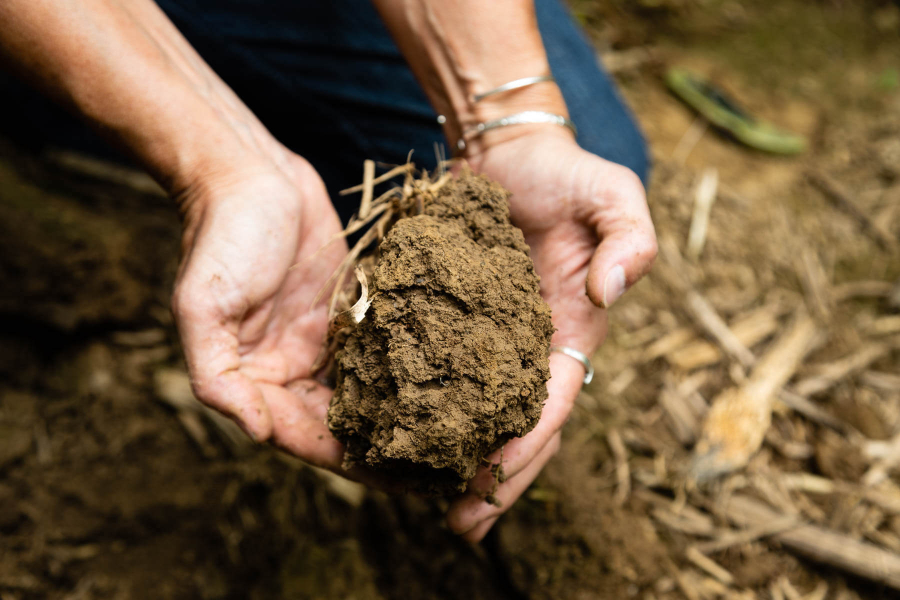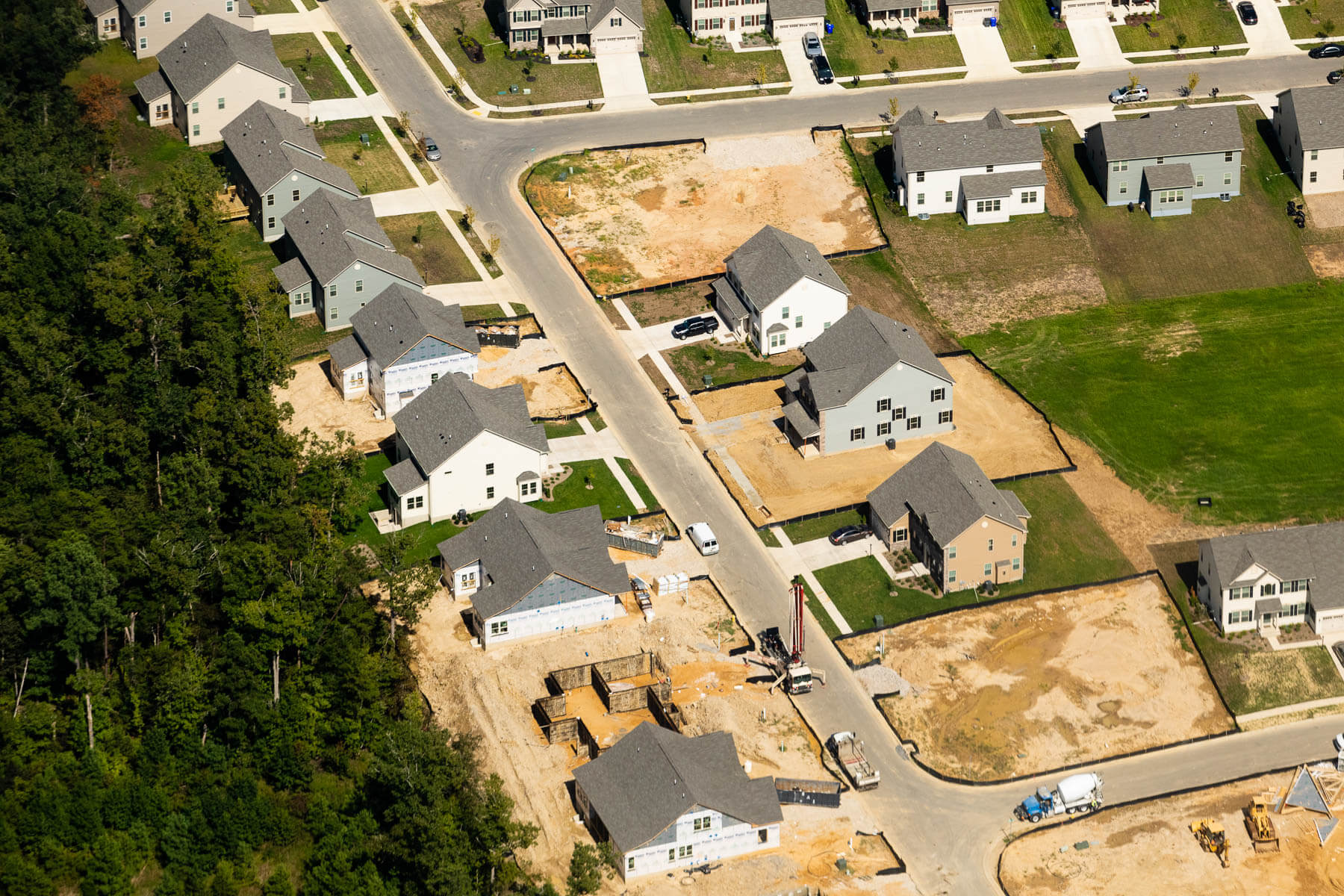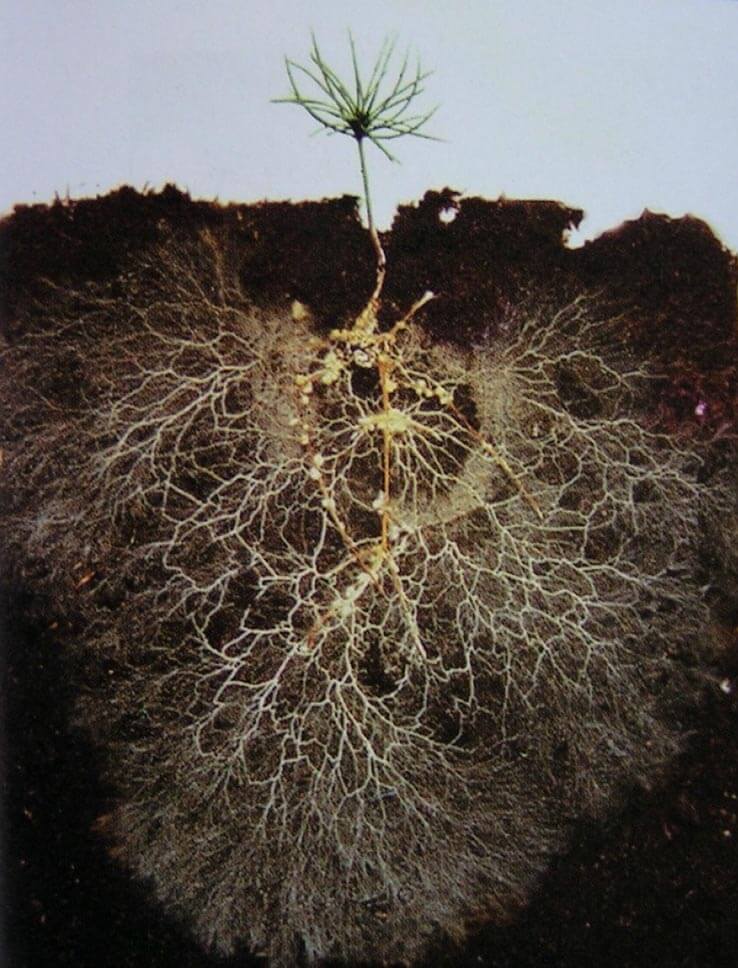The dirt on soil
We're digging deep into this foundational resource for both our farms and our cities

We often ignore the land. It lies beneath plants and buildings and is just thought of as something to stand on, but land can provide so many services. It sucks up water during rainstorms to prevent flooding, retains water to help during droughts, breaks down old plants, holds the earth in place to prevent erosion and helps our food grow.
But in order for land to provide those services, it needs healthy soil. Poor soil in our farms and cities has helped create the problems that plague our region: erosion, nutrient and sediment pollution, and flooding. If we want to solve our community flooding problems and help farmers, we must heal our land. To do that, we need to look at our soil.
Soil and dirt are not the same thing. Soil is alive. It is a structured breakdown of rocks, organic matter from plants and a weighty portion of microbial life. Dirt is a word often defined by context—called “soil” in the garden and “dirt” on the dog’s paws—but the distinction is about more than location. Dirt is dead. For decades, our activities have been turning our soil to dirt, destroying the structure, removing the organic matter and leaving it inhospitable to microbial life.
Soil structure matters
The main components of soil are sand, silt and clay, and each particle is a different size. If you were to magnify these particles and compare them, the large sand particles might be comparable to a volleyball; the silt, a tennis ball; and the little clay particles would be tiniest—perhaps the size of a pea.
These differently sized particles form a loose structure that leaves spaces in between. The spaces become a system of air pockets and tunnels within the soil. Imagine a sponge—it has structure, it holds its shape, but the body of it is filled with differently sized pockets of air.
Unpaved land made of healthy soil would soak up rain as it falls. In healthy soil, water flows through the large air pockets—a process we call infiltration—and is held in the small and medium sized spaces. In a dry spell, plants would use the suspended water from the small and medium sized spaces to continue to thrive.
Damaging the structure
Both development practices in town and tilling practices in fields smash up the ground and compact the soil. Think back to that sponge. Imagine crushing it in your hand, gathering it into a tiny, dense ball—the sponge will no longer soak up water.
This is what we do to our soils when we till the land or disturb the ground with development.
Tilling and plowing are both farming practices that break apart and damage the soil. When organic matter in the soil is exposed to oxygen, it breaks down at an accelerated rate and dissipates quickly. As the sand, silt and clay are exposed to the air and sun, they separate from each other. When it rains on the separated soil, the sand and most of the silt sit on top while the clay particles get picked up in the water. As the water tries to seep into the ground with its cargo of clay, the clay particles build up on each other until they form a barrier beneath the ground. Water starts to back up, and the land floods.

In cities and towns, development knocks out all the air in soil. Machines pick up the earth, rip it up, pack it down and roll over it as they go about construction. The ground becomes compacted. Without the pockets for air, there is no space for water or living creatures, like earthworms or insects.
Once construction is complete, companies try to restore the green look of the land by rolling carpets of half-inch sod over the compacted soil. To help the new construction look welcoming as quickly as possible, fertilizers are often applied to speed the process. On the surface it looks green and luscious, but it is essentially a skin of shallow roots over dead dirt. When it rains, the water stops at the dead, compacted dirt underneath the sod and cannot soak into the ground. Yards flood, and the excess water—now filled with extra fertilizers from the lawn—joins the rest of the stormwater impacting that town.
Life underground
In living soil, earthworms, insects, fungi and helpful bacteria live in the spaces between particles and interact with plants. In fact, microbes make up most of the biomass in healthy soil, where all kinds of bartering and trading occur.
Fungi called mycorrhizae are part of the community living beneath the soil’s surface, but they aren’t a problem—they’re partners. A plant will produce excess sugar and send it down to the roots, where the fungi are waiting. In return for the sugars, hyphae (individual threads of the whole fungus system) latch onto the roots like hair extensions, creating a seamless colony. The whole root system expands with the help of mycorrhizae, giving the plant access to water and nutrients it never could have reached alone.

Nightcrawlers are one of the most familiar lifeforms in the soil. These earthworms are vertical burrowers, pulling organic matter through the different levels of soil and creating fat tunnels. Nightcrawlers are attracted to the organic matter in soil from decaying plants, which they then break down into beneficial nutrients. Their tunnels create additional air spaces for water transfer, helping with infiltration.
Keeping a balance
Not all underground life is beneficial to plants, but a healthy soil system includes built-in biological defenses. One of the most abundant life forms on earth and in the ground is the nematode, a type of worm that can be parasitic. Farmers can purchase “nematode resistant” seeds and cultivars (selectively bred plants), just as they buy plant foods and fertilizers, but another solution to buying these products is cultivating healthy soil.
The mychorrizae extending a plant’s root system are also, in most cases, carnivorous. The fungi create traps that look like small lassos, called hyphal rings. As a nematode swims towards a plant’s root system and through the loop, the ring tightens like a blood pressure cuff. Water fills the loop, constricts it, and traps the nematode, which is slowly digested by the fungi.
Strong roots are a hallmark of erosion control and healthy plants, but another common farming practice keeps them rather short and weak: excess fertilizers. Nutrients are necessary for healthy plant growth, but too much can burn plants and waste money. When plants are given excess fertilizers from the beginning, they don’t have to work to grow. The roots stay very shallow; most of the fertilizer washes off the field and into the streams along with the dirt. In the water, the extra nutrients cause algae blooms and harm aquatic life.
When soil is healthy, it contains the nutrients the plants need. Their roots, helped by mycorrhizae in the undisturbed soil, will grow deep into the ground in search of it. With this massive root network, the land becomes a natural filter of nutrients.
Healthy soil is a self-sustaining system that can hold water, trap carbon, nourish plants and act as an integral component in green infrastructure measures like forest buffers or rain gardens.
It is worth our time and attention to change dirt back into soil. When the whole system is in balance, plants grow healthy without damaging the income of farmers, cities and towns are more resilient and it helps to keep our waters healthy and clean.

Comments
There are no comments.
Thank you!
Your comment has been received. Before it can be published, the comment will be reviewed by our team to ensure it adheres with our rules of engagement.
Back to recent stories